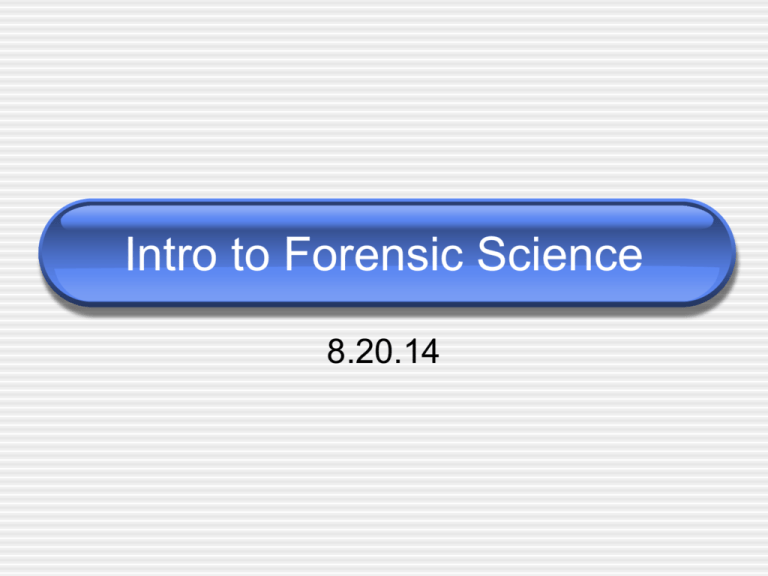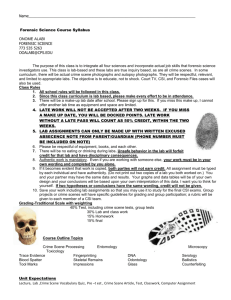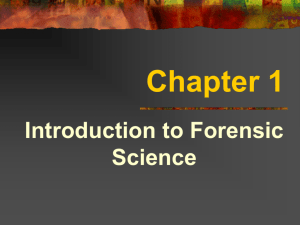64770_Intro_to_Forensics
advertisement

Intro to Forensic Science 8.20.14 What is Forensic Science? What is Forensic Science? • “The application of science to the criminal and civil laws that are enforced by police agencies in a criminal justice system.” • Few techniques of forensic science are unique to the field. Rather, it borrows from biology, chemistry, physics, geology, and anthropology for the above purpose. Crime Investigations • While Forensic Science may start at the scene of the crime, most work takes place in the crime lab. Crime Laboratories • First established in 1923 in LA. • FBI established first federal crime lab in 1932 • Most cities now have their own crime labs…why??? Crime Lab Services • Physical Science Unit: Applies principles of chemistry, physics, and geology to the identification and comparison of physical evidence from crime scene. Examples: Drugs, glass, paint, explosives, soil, fibers, etc. Lab Services, cont. • Biology Unit: Performs DNA analysis, identifies bloodstains and other bodily fluids, identifies and compares botanical materials, compares hairs and other natural fibers. Lab Services, cont. • Firearms Unit: Examines firearms, discharged bullets, cartridge cases, shotgun shells, and ammunition. Lab Services, cont. • Document Examination Unit: Analyzes handwriting, paper, checks, and printers of documents. Lab Services, cont. • Photography Unit: Examines and records physical evidence at the crime scene, suspect’s location, and within crime lab Additional Specialized Units • Toxicology Unit: Examines organs and fluids to determine presence and identification of drugs or poisons. • Fingerprint Unit: Processes and examines latent fingerprints. Additional Specialized Units • Polygraph Unit: Lie detector tests • Voiceprint Analysis Unit: Analyze telephone or other vocal messages for individual, location, etc.








